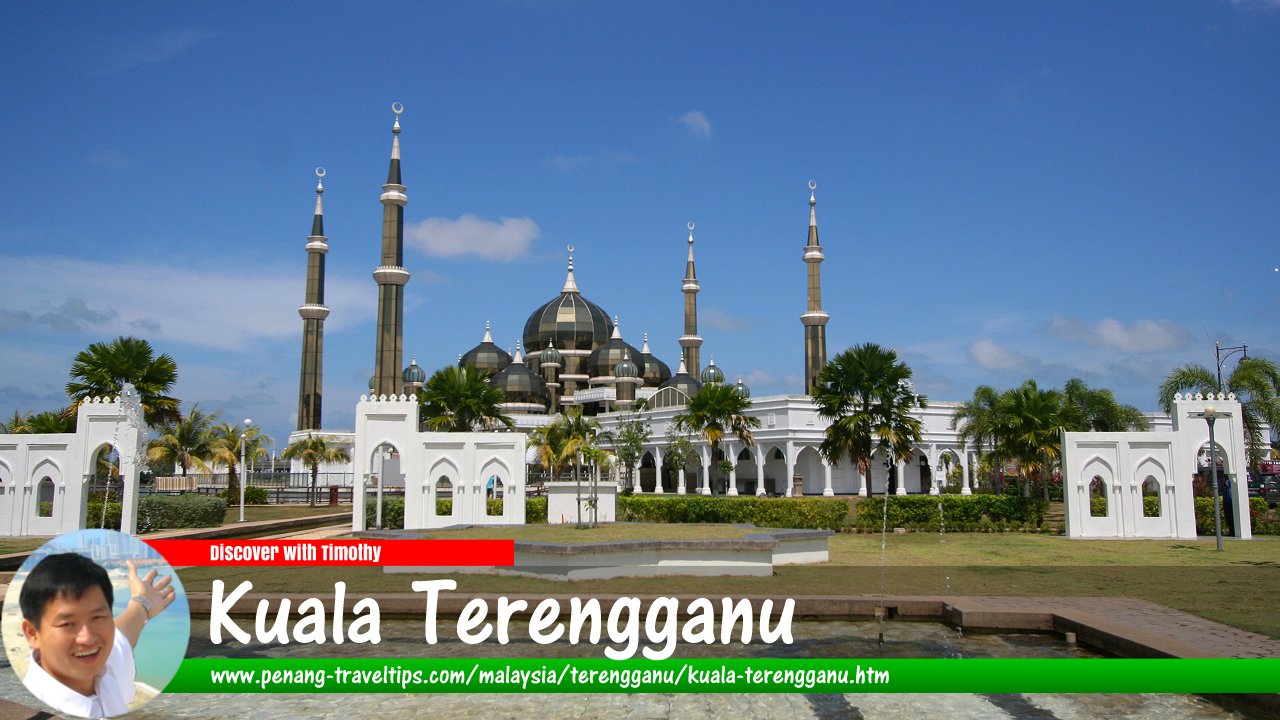 Kuala Terengganu (19 February, 2011)
Kuala Terengganu (19 February, 2011)
B. Melayu
Kuala Terengganu is my personal travel guide for discovering Kuala Terengganu (GPS: 5.331310, 103.132428), the capital as well as largest city of the state of Terengganu, on the east coast of Peninsular Malaysia. The city is located at the estuary of the Terengganu River, on a promontory that juts northwards into the South China Sea.
Map of Kuala Terengganu
Places in Kuala Terengganu
- Bukit Puteri (GPS: 5.33633, 103.137)

- Chinatown (GPS: 5.33302, 103.13271)

Places of interest in Kuala Terengganu
- Crescent Moon Bridge (GPS: 5.33601, 103.13454)

- Dataran Shahbandar (GPS: 5.33826, 103.13928)

- Istana Maziah (GPS: 5.33585, 103.13738)

- Kuala Terengganu Waterfront (GPS: 5.33519, 103.13329)

- Noor Arfa Craft Complex (GPS: 5.27634, 103.16763)

- Pulau Duyong (GPS: 5.32985, 103.12274)

- Taman Tamadun Islam (GPS: 5.32267, 103.1131)

Categories of Sights in Kuala Terengganu
- Beaches in Kuala Terengganu
- Bridges in Kuala Terengganu
- Bus Terminals in Kuala Terengganu
- Chinese Temples in Kuala Terengganu
- Handicraft Centres in Kuala Terengganu
- Hills in Kuala Terengganu
- Historic Buildings in Kuala Terengganu
- Historic Sites in Kuala Terengganu
- Homestays in Kuala Terengganu
- Hotels in Kuala Terengganu
- Islands in Kuala Terengganu
- Markets in Kuala Terengganu
- Mosques in Kuala Terengganu
- Museums in Kuala Terengganu
- Palaces in Kuala Terengganu
- Parks in Kuala Terengganu
- Restaurants in Kuala Terengganu
- Stadiums in Kuala Terengganu
- Waterfront Promenades in Kuala Terengganu
Homestays in Kuala Terengganu
- Homestay Teluk Ketapang (GPS: 5.37281, 103.11453)

Public Amenities in Kuala Terengganu
- Kuala Terengganu Airport (GPS: 5.37916, 103.10541)

- Stadium Tertutup Terengganu (GPS: 5.3346, 103.13788)

- Sultan Mahmud Bridge (GPS: 5.33215, 103.11857)

- Sultan Mizan Zainal Abidin Stadium (GPS: 5.36979, 103.10556)

- Town Bus Terminal
Sights at Taman Tamadun Islam
- Bbeteng Restaurant & Food Court: Food establishment offering local and international dishes.
- Crystal Mosque: Landmark glass mosque within Taman Tamadun Islam.
- Taman Tamadun Islam Monument Park: A park with replicas of 22 Islamic monuments.
- Tok Ku Paloh Jetty: Jetty for river cruises.
- Taman Tamadun Islam Convention Centre: Biggest convention centre in the East Coast of Peninsula Malaysia.
360° View of Kuala Terengganu on Google Maps Street View
View at Pasar Payang, Kuala Terengganu.About Kuala Terengganu
Kuala Terengganu is a good place to feel the ambience of an East Coast Malay town. This is where you can see crafts such as traditional boat building. The State Museum is also well worth a visit for a glimpse at the culture, heritage and products of Terengganu.Kuala Terengganu has a population of 400,000 (2011 estimate). It was established by Chinese traders whose descendents now live in Kuala Terengganu's Chinatown, which has the oldest streets in the city. Most of the people living in Kuala Terengganu today are Malays, accounting for 90% of the population. It began as a settlement as early as the 15th century, rivalling Malacca as one of the oldest settlements on the peninsula.
In the past decade, Kuala Terengganu has begun to position itself as a domestic as well as international travel destination, with varying degrees of success. It is home to the biggest state museum in Malaysia. The city has also developed its waterfront as well as islands on the Terengganu River itself.
One of the biggest and most exciting attraction in Kuala Terengganu is the Islamic monument park, Taman Tamadun Islam, which showcases 22 monuments from different countries of the world. Among the monuments showcased at the park include mosques, mausoleums and citadels. Also located within Taman Tamadun Islam is the iconic Crystal Mosque.
On the international front, the sailing event Monsoon Cup was launched in 2005 to discard the stigma attached to the word "monsoon", and to brand Kuala Terengganu as a destination for world-class regatta.
Of the many small islands in the estuary of the Terengganu River, the biggest and most important is Pulau Duyong, an island that was the traditional home for boat makers. The island is now brought into the 21st century as the venue of the Monsoon Cup.
 Kuala Terengganu (19 February 2011)
Kuala Terengganu (19 February 2011)
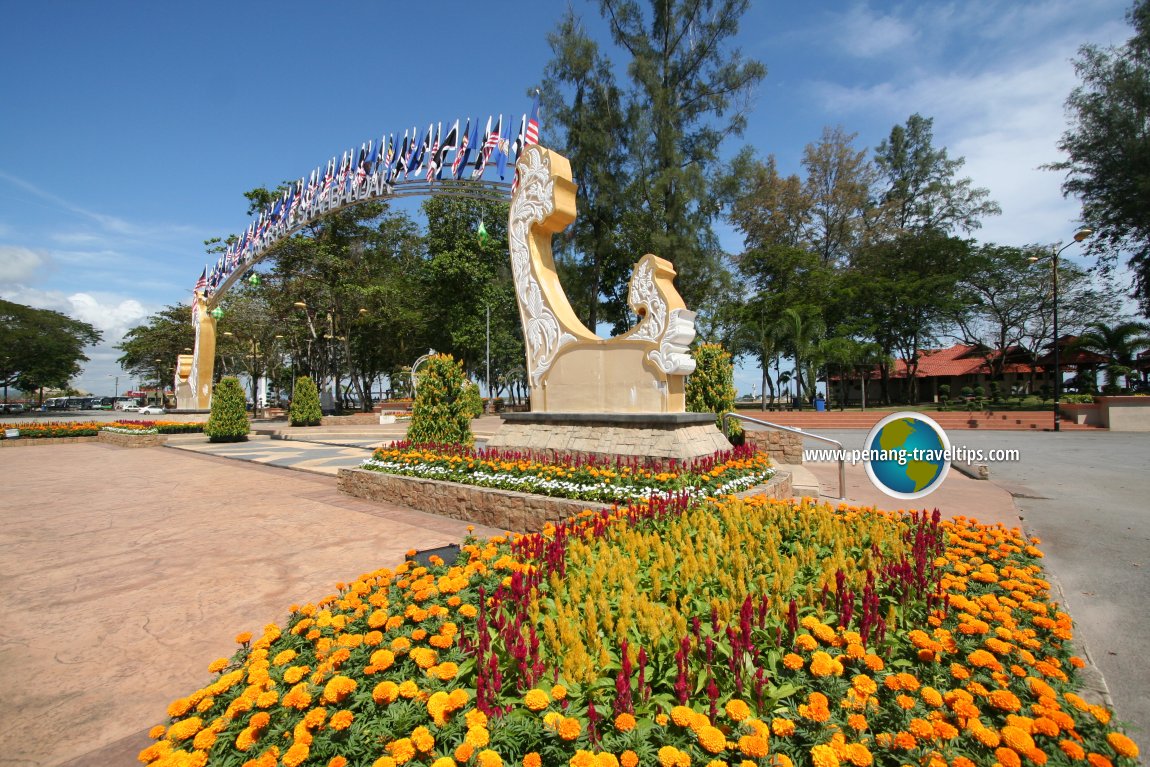 Dataran Shahbandar, Kuala Terengganu (19 February 2011)
Dataran Shahbandar, Kuala Terengganu (19 February 2011)
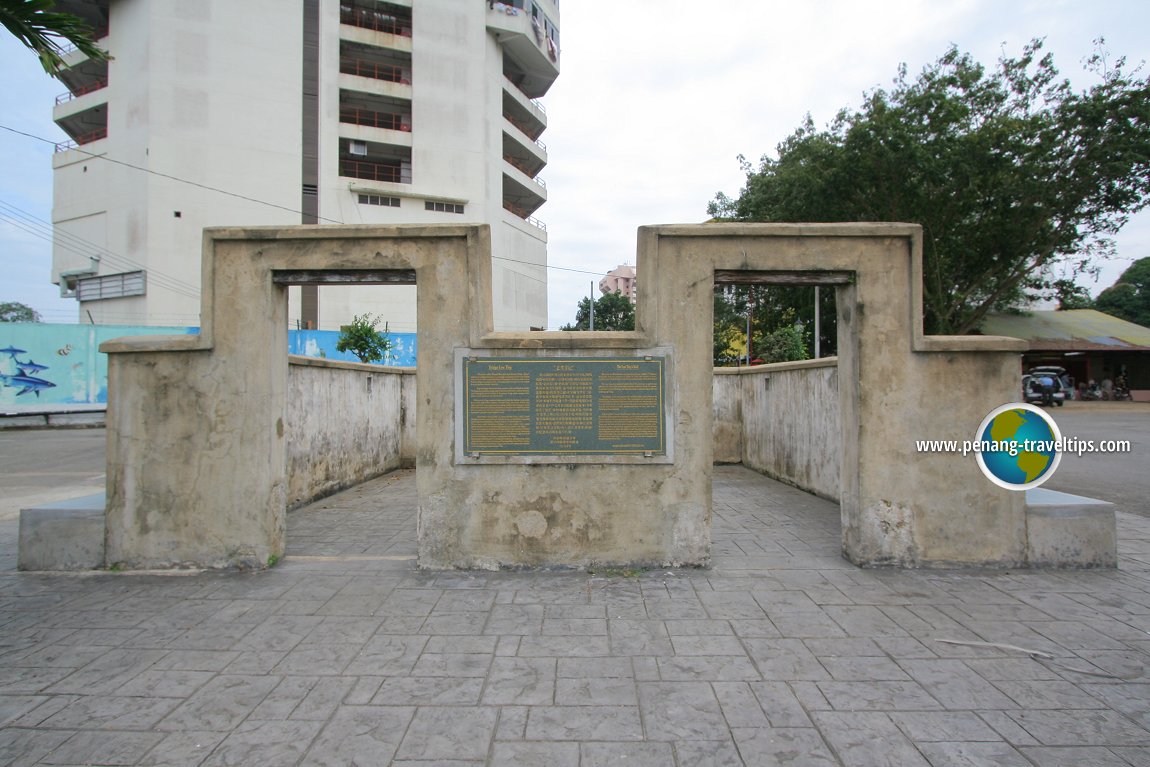 Low Tiey's Well, Kuala Terengganu (31 December 2006)
Low Tiey's Well, Kuala Terengganu (31 December 2006)
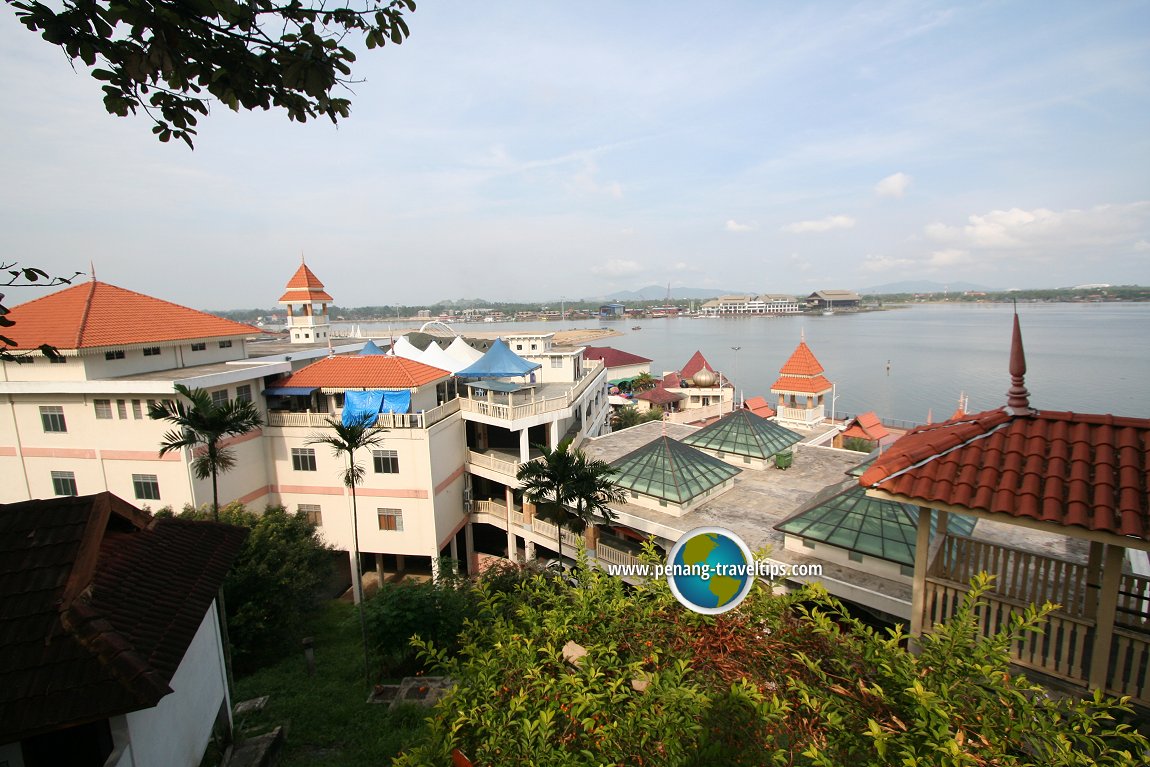 Kuala Terengganu, as seen from Bukit Puteri (20 February, 2011)
Kuala Terengganu, as seen from Bukit Puteri (20 February, 2011)
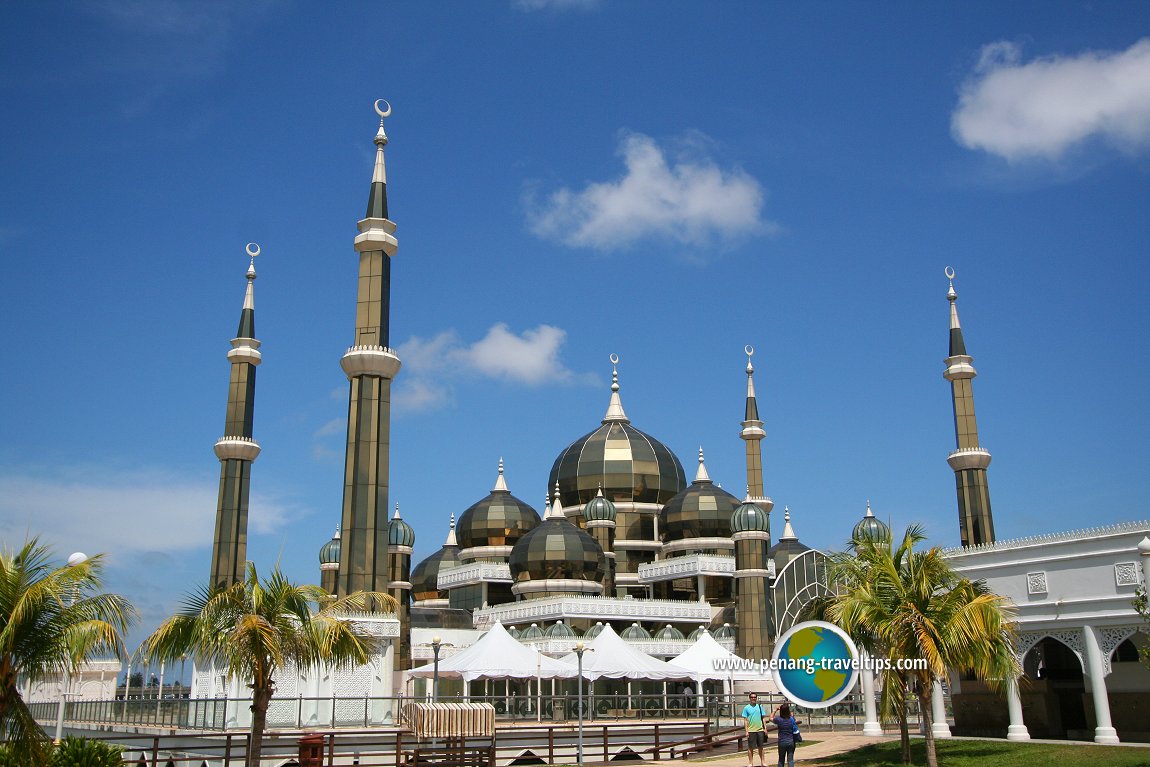 The Crystal Mosque at Taman Tamadun Islam (19 February 2011)
The Crystal Mosque at Taman Tamadun Islam (19 February 2011)
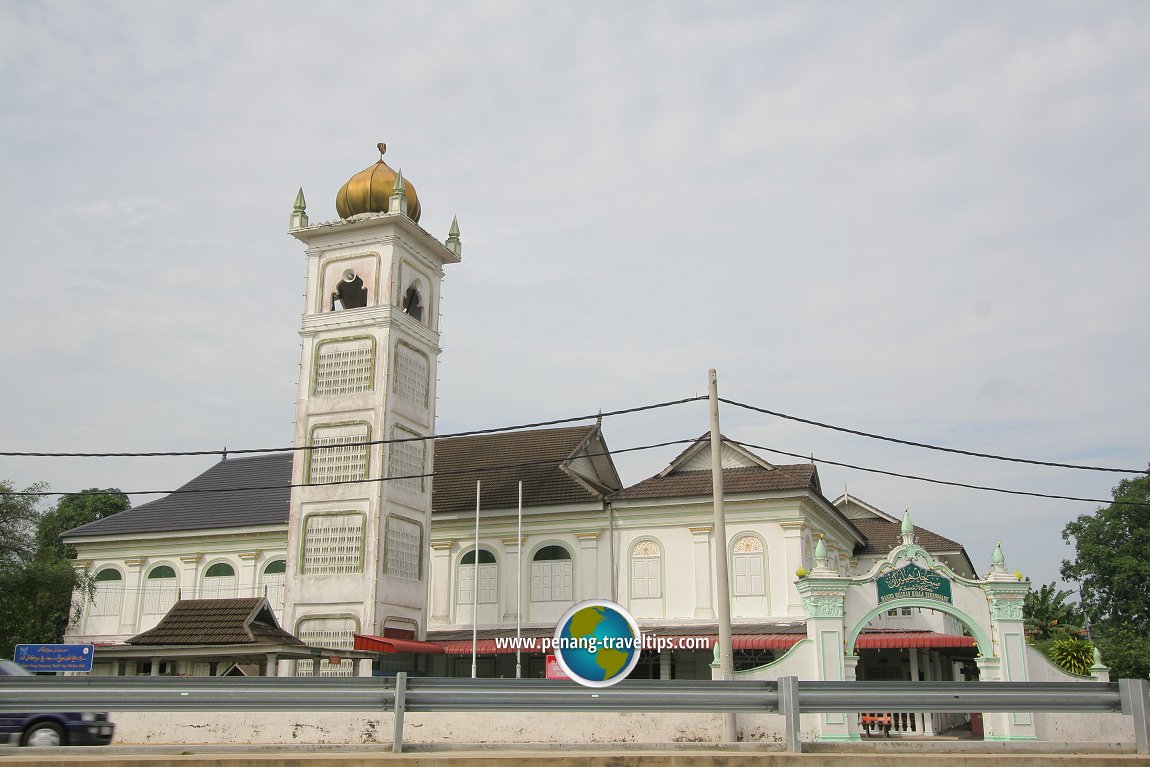 Masjid Hiliran Kuala Terengganu (31 December 2006)
Masjid Hiliran Kuala Terengganu (31 December 2006)
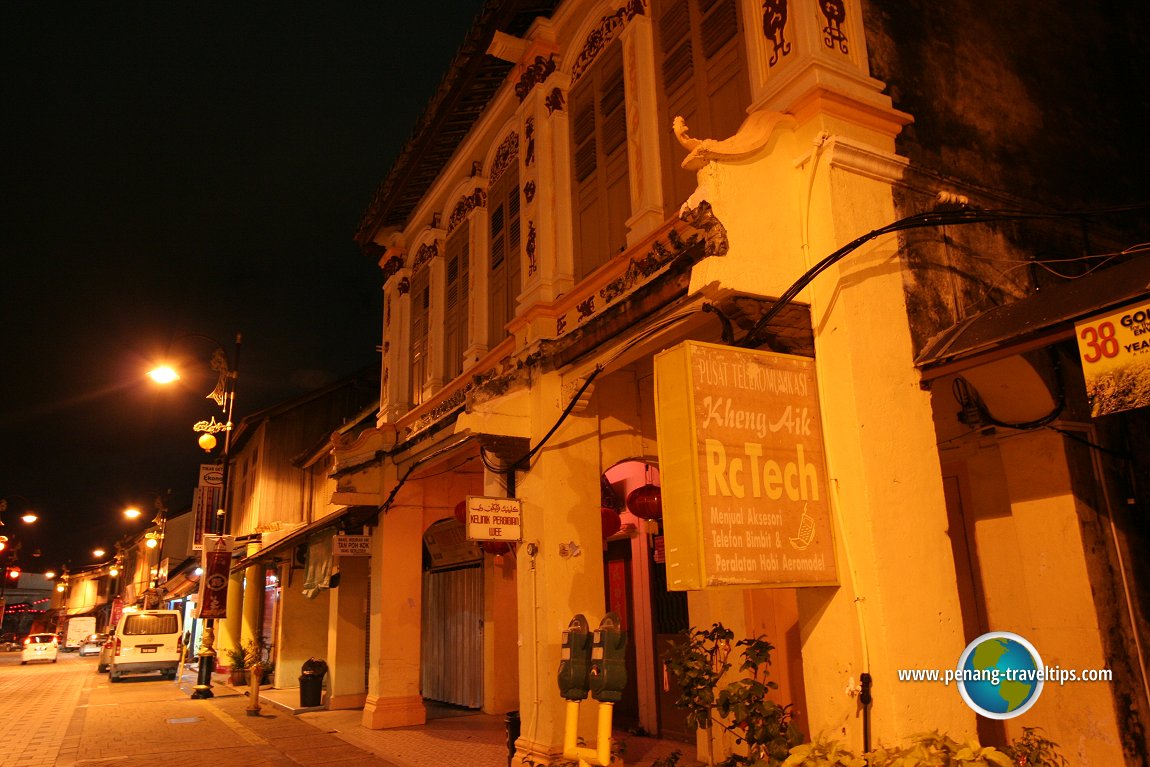 Kuala Terengganu's Chinatown at night (18 February 2011)
Kuala Terengganu's Chinatown at night (18 February 2011)
How to reach Kuala Terengganu
By PlaneKuala Terengganu's Sultan Mahmud Airport is a small airport to the north of the city. It receives several flights a day from Kuala Lumpur by Malaysia Airlines and AirAsia. Firefly also provides regular flights to Singapore three times a week.
By Road
Federal Route 3 links Kuala Terengganu with Kota Bharu to the north, and with Kuantan to the south. If you are coming from Kuala Lumpur, you should take the Karak Highway (E8) all the way till Kuantan, and then take Federal Route 3 north to Kuala Terengganu.
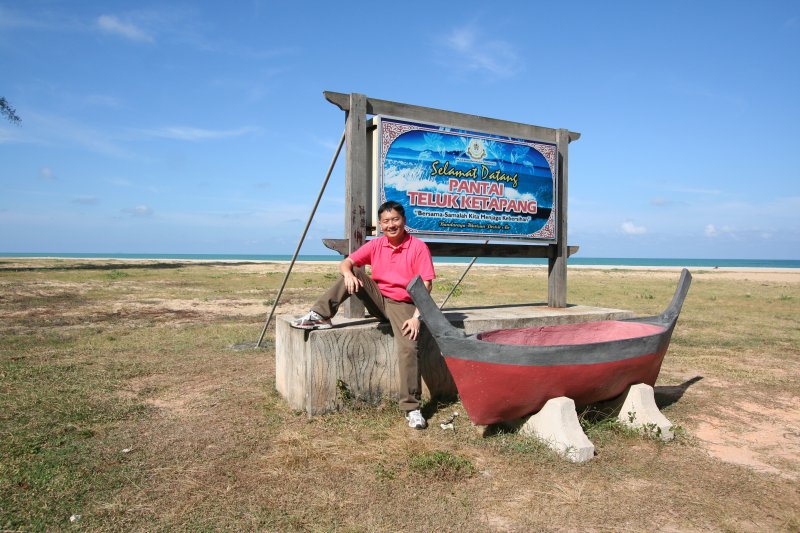 Tim at Pantai Teluk Ketapang, Kuala Terengganu (19 February, 2011)
Tim at Pantai Teluk Ketapang, Kuala Terengganu (19 February, 2011)
Getting Around Kuala Terengganu
The town centre is small enough for you to walk around. However, to be practical, it is best to rent a car so that you can explore the places around Kuala Terengganu. Alternatively Kuala Terengganu has a bus service with three routes, one of which goes to Taman Tamadun Islam. The Town Bus Terminal is at Dataran Shahbandar at the waterfront.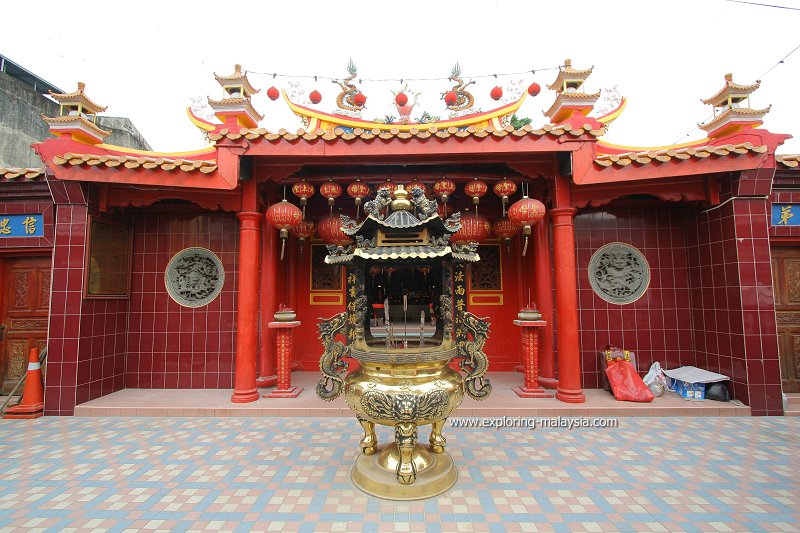 Ho Ann Keng Temple, Kuala Terengganu (31 December 2006)
Ho Ann Keng Temple, Kuala Terengganu (31 December 2006)
List of Towns in Terengganu and State Capitals of Malaysia
Return to Discover Terengganu mainpage
 Latest updates on Penang Travel Tips
Latest updates on Penang Travel Tips

Copyright © 2003-2025 Timothy Tye. All Rights Reserved.

 Go Back
Go Back